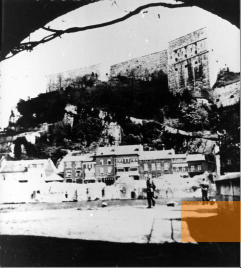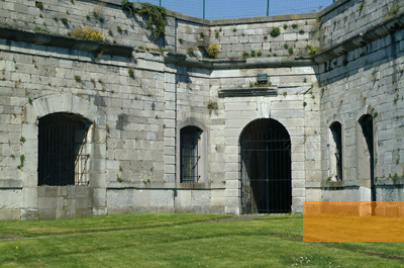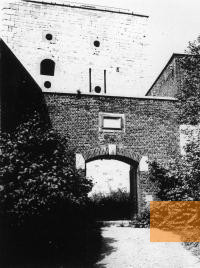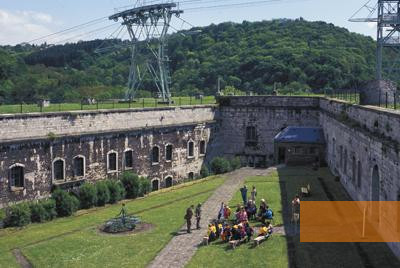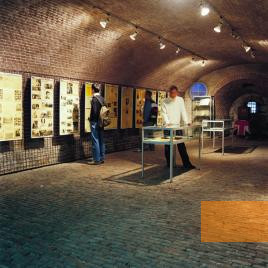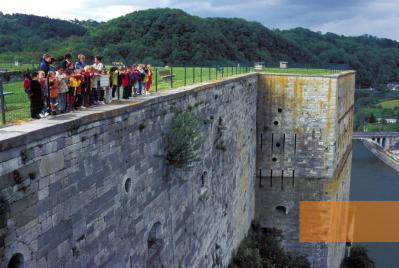Today, the former Gestapo prison at the Fort of Huy houses a museum.
Since the Middle Ages, the Fort of Huy had guarded the mouth of the river Meuse valley. Many a time it had become the scene of heavy fighting due to its strategic location. The original fortress was destroyed in 1717. The fort we see today was built under Dutch rule (1815-1830). During the First World War, the Germans used the fort as a prison for delinquent German soldiers and then as a camp for Russian prisoners of war. During the inter-war period, the fort was run by the Belgian army. After the German Wehrmacht's invasion of Belgium in 1940, the fort was used as a Gestapo prison and as a collection camp. About 7,000 Belgians and foreigners were held captive here, among them many resistance fighters and political opponents. The Fort of Huy was one of the central departure points for transports from Belgium to the National Socialist concentration camps in the German Reich. Following the secret orders issued by the Chief of the Wehrmacht High Command Wilhelm Keitel, opponents of the occupation regime were deported without their families being informed. These measures, later known as the »Night and Fog Decree«, were meant to prevent the population from supporting the resistance movement. Jews, forced labourers, black marketers as well as farmers, who refused to pay duties, were also imprisoned at the fort.
Between 1940 and 1944, about 7,000 Belgians and foreigners were held captive at the Fort of Huy. Frenchmen made up the second-largest prisoner group - after the Belgians - with about 1,250 inmates.
Between the end of the war and 1946, the state of Belgium used the Fort of Huy as a prison for collaborators and so-called »inciviques« (English: »uncivil« or »unpatriotic«). Since 1972, the fort has been under monument protection. In 1992, a museum dealing with the history of the resistance movement and presenting individual stories of people who were held captive at the Fort of Huy was opened.
- Name
- Mémorial national de la Résistance - Le Fort de Huy
- Address
-
Chaussée Napoléon
4500 Huy - Phone
- +32 (0)85 215 334
- Web
- https://www.huy.be/loisirs/tourisme/huy-tourisme/decouvrir-huy/les-incontournables/fort-memorial
- fort@huy.be
- Open
- The museum is open from April 4 to September 30. Monday to Friday 9.00 a.m. to 12.30 p.m and 1.00 p.m. to 4.30 p.m., on weekends and holidays 11 a.m. to 6 p.m. July and August daily 11 a.m. to 7 p.m.
- Possibilities
- Guided tours are available upon request:
M. Prignon
Route Militaire 1
4540 Amay
Tel.: +32 (0)85 313841.


